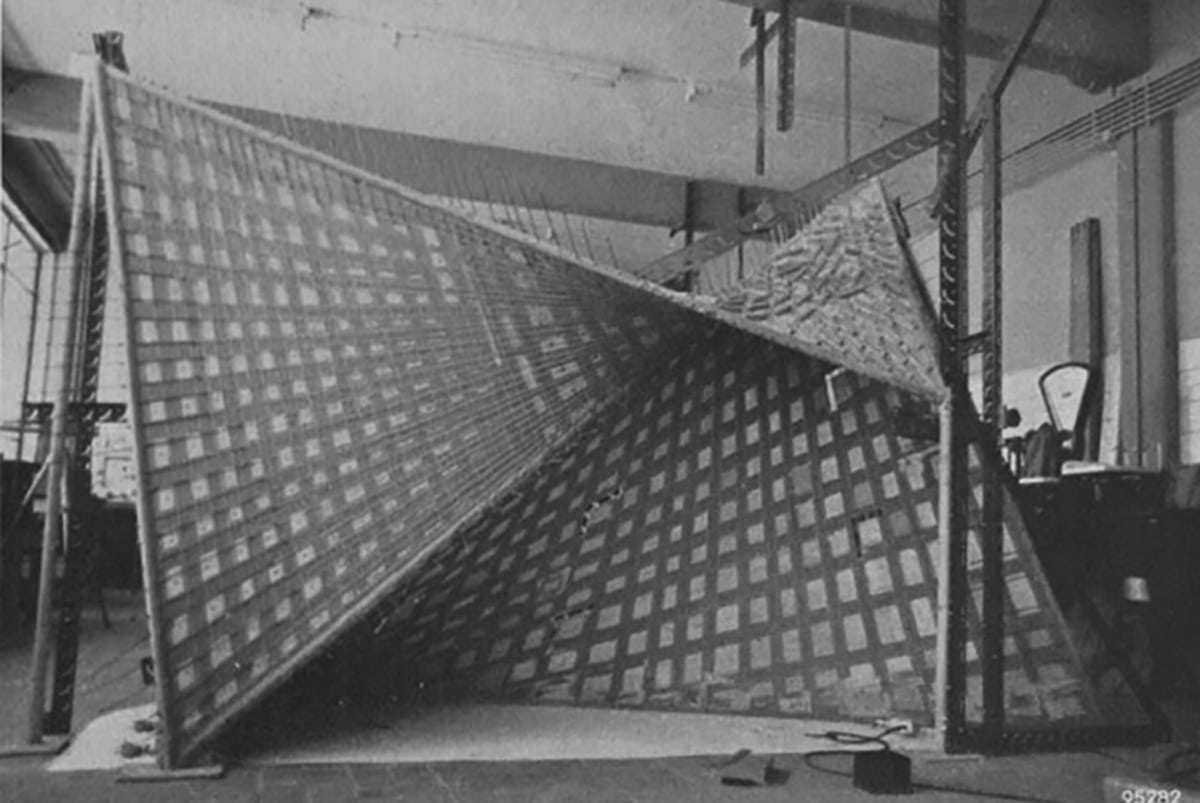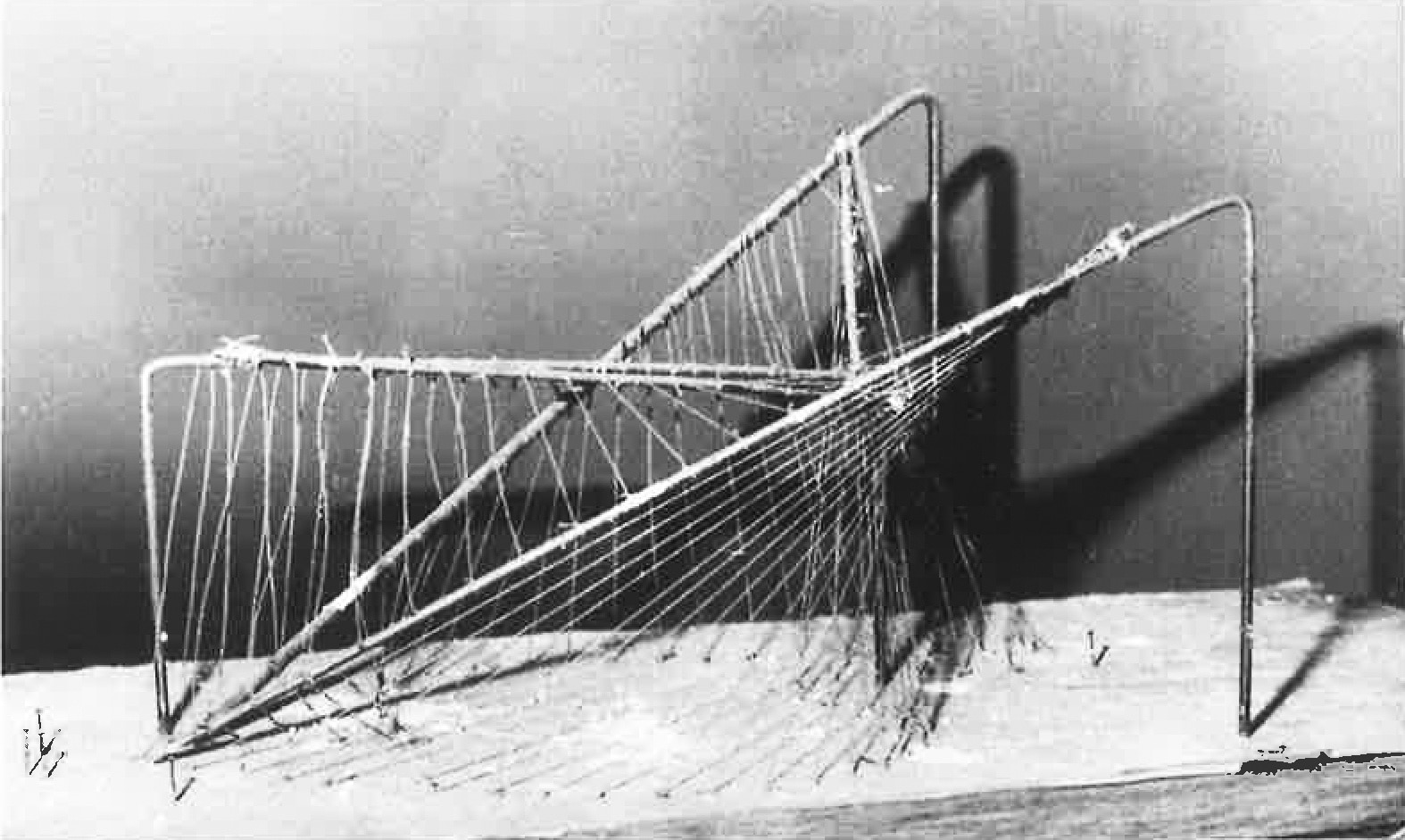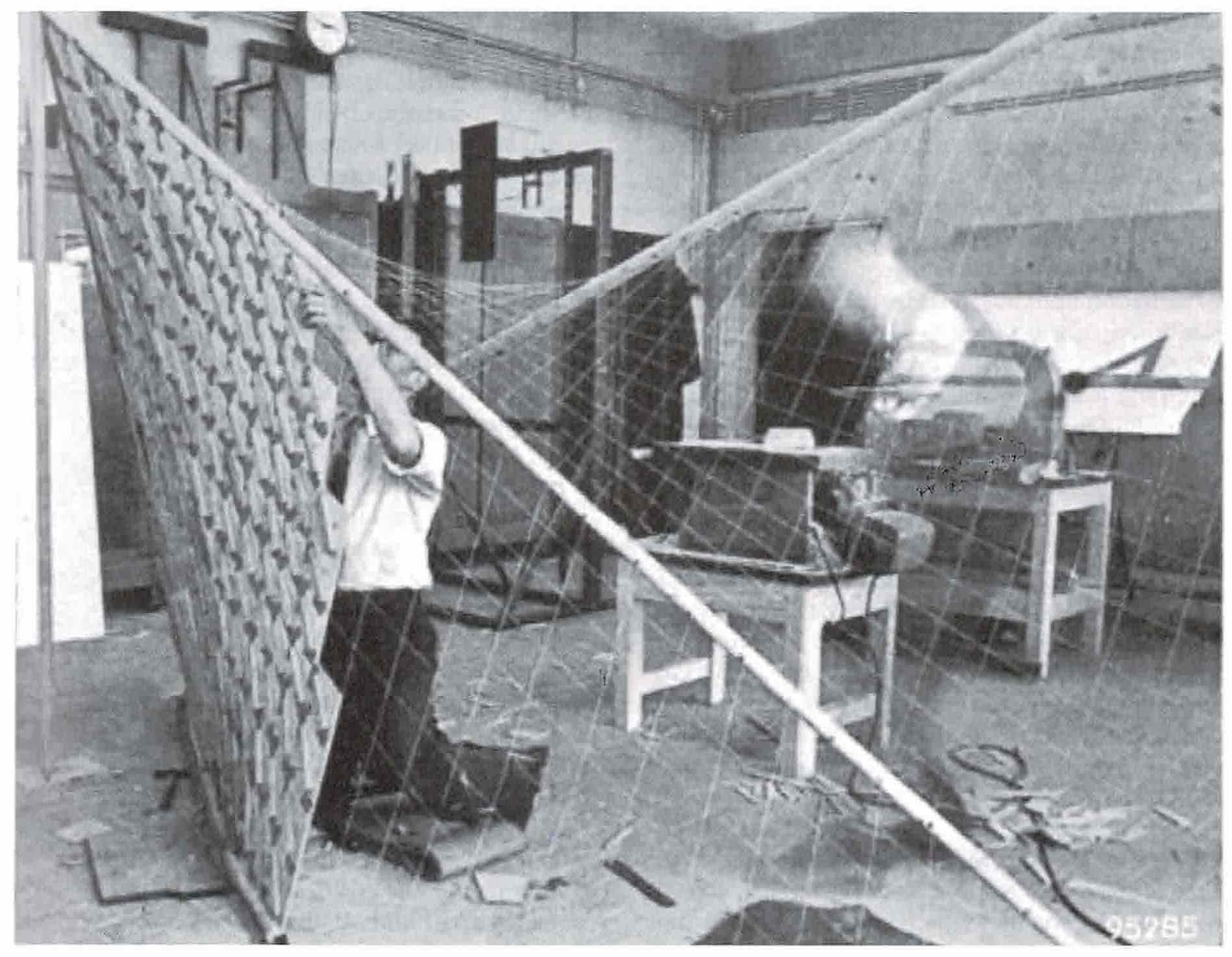The Philips Pavilion: Models as Structural Expression
The following text discusses the use of models as an integral part of the architectural process. It is excerpted from Matthew Mindrup’s article on the roles of models in the design of the Sydney Opera House and Iannis Xenakis and Le Corbusier’s Philips Pavilion for the 1958 World’s Fair (arq: architectural research quarterly, vol. 25, no. 1, 2021). Find the full article here.

Le Corbusier was approached by a building committee in the winter of 1956 to design a pavilion for the Philips company at the Expo. The architect was almost seventy years old and initially paid little attention to the project as he was preoccupied with the governmental centre for the new capital of Chandigarh in the Indian state of Punjab. One aspect, however, apparently piqued his interest, the creation of a structure for the first electronic poem in which ‘(e)verything will happen inside: sound, light, colour, rhythm. Perhaps, a scaffolding will be the pavilion’s exterior aspect.’ [1] Given the quantity of work in his Paris studio at the time, Le Corbusier relied on the assistance of Xenakis who joined the office in 1951 and had, despite his lack of architectural training, impressed the master with his intelligence and skill working on a handful of projects including the Unite d’Habitation of Nantes-Reze. [2] Although Le Corbusier did not establish the precise form of the walls and roof in the early meetings, he fixed the shape of the building’s footprint as that of a ‘stomach’ with a narrow entrance and exit ‘spout’ on either side to shelter it from external light and sound. The stomach was intended to be a large central space where a six-to-seven-hundred-person audience could sit or lay down and experience an eight-minute piece of electronic music by composer Edgard Varese, synchronised to various effects of light, changing colours and black-and-white walls. In his first studies, Xenakis ‘went through several unfruitful attempts based for the most part on Le Corbusier’s design, which [he] was trying to respect as much as possible’. [3] Possibly recalling the graph of the musical composition that he composed a few years previous – a glissandi for strings he called Metastasis and which resembled of ruled surface of a hyperbolic paraboloid – Xenakis began to work with string and stiff wire to model the walls and roof as a seamless superstructure of ruled surfaces.


With this model, a form began to emerge, a mixture of conoids and hyperbolic paraboloids, that was less a result of logic but ‘[i]ntuition’s arbitrariness’, one whose curves would enhance the experience of being surrounded by sound, theatre, and light. [4] At this time, engineers were consulted, who proposed changing all conoids to hyperbolic paraboloids – to more easily define the curvatures and simplify the calculations – and to use a similar structural form as the model in which strings became a heavy metal skeleton and vertical bent wire became prestressed reinforced concrete stanchions. Once Xenakis found an acceptable form working with the model, he drafted it in orthographic projection.
Notes
- Le Corbusier, Jean Petit, Philippe Agostini, Iannis Xenakis, Le Poeme Electronique Le Corbusier [The Electronic Poem of Le Corbusier] (Editions de minuit: Paris, 1958).
- Marc Treib, Space Calculated in Seconds: The Philips Pavilion, Le Corbusier, Edgard Varese (Princeton University Press: Princeton, NJ, 1996), pp. 14–15.
- Iannis Xenakis, ‘Le Pavilon Philips: A L’Aube d’une Architecture [The Philips Pavilion: At the Dawn of Architecture]’, in Musique Architecture [Music Architecture] (Casterman: Paris, 1976), p.129.
- Ibid., p. 32.
